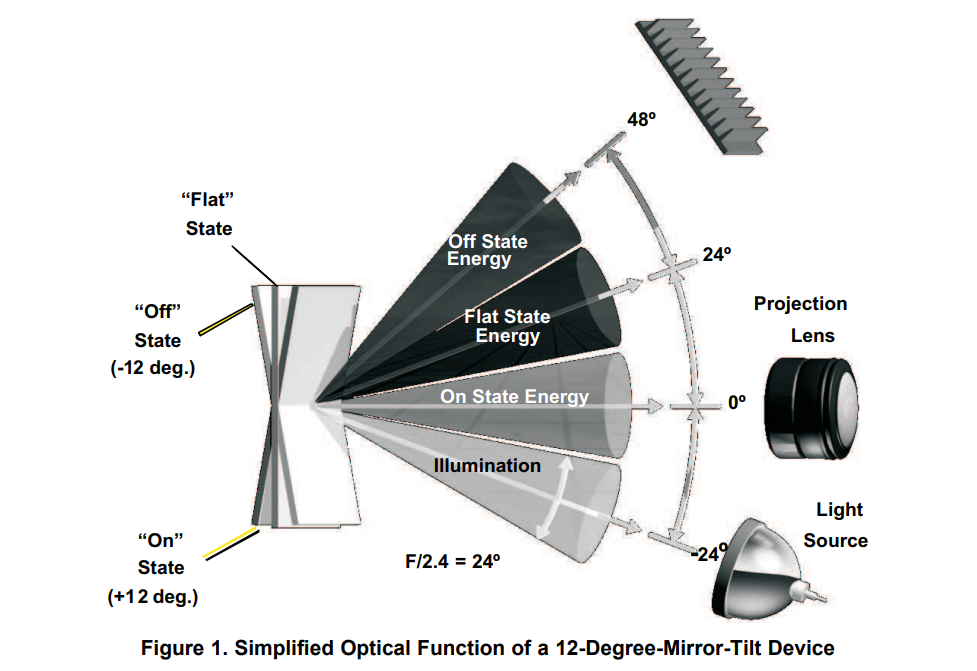Dear specialists!
We are developing now an illumination system using Texas Instruments's model DLP5531.
And we have a pair of questions.
1. Do we understand right that for incident spot angular divergence in transversal direction is not limited?
Can we use a spot with the next divergence: +/- 12 deg (longitudinal), +/- 35 deg (transversal)?
2. The efficiency 66% was specified for the angle of incidence: 24 deg (longitudinal), 0 deg (transversal).
What will be efficiency for the other angles of incidence:
Point 2. -36 deg (longitudinal), 0 deg (transversal)?
Point 3. -24 deg (longitudinal), 35 deg (transversal)?
Point 4. -36 deg (longitudinal), 35 deg (transversal)?
You may see the corresponding picture with comments using the next link (google photos):
photos.app.goo.gl/5yZVqquXrAmyHefW6
Thank you in advance!


